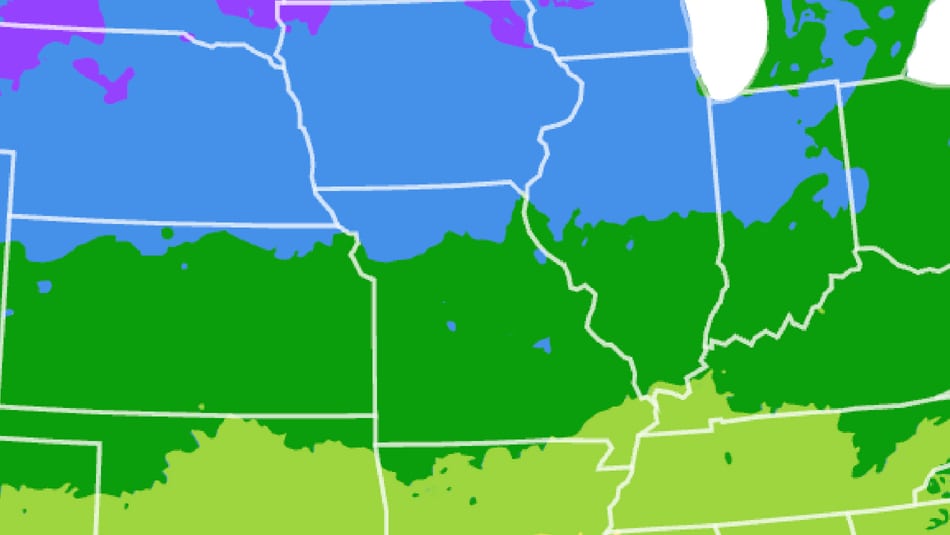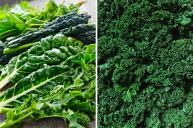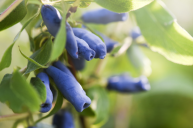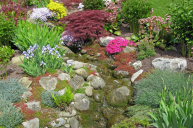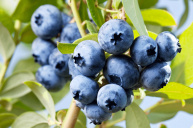You wouldn't expect bananas to grow in the desert, apples to grow near the beach or peaches to grow up in the Cascade or Rocky Mountains. And that's all due to planting zones. Planting zones (which are also known as "plant hardiness zones," and "growing zones") are exactly what you'd expect, zones in which certain plants thrive the best. There are 13 different zones and each one has specific plants which do the best, taking the guess-work out of wondering if your tomatoes will survive the growing season.
Our friends over at Gilmour whipped up this Interactive U.S. Planting Zone Map for 2018, and it is a total plant lifesaver.
Simply input your zip code into the plant hardiness zone map box and figure out which zone your yard falls under. Then check out your zone below to see what plants grow the best in your garden.
Zone 1
Located in Alaska, this zone is the coldest for planting with an average minimum temperature of -60 - -50ºF. Native plants do really well in this tundra condition and annuals are a great option as well since they do not grow in the winter.
Some popular plants in this zone include: cabbage, tomatoes, chokecherry, basil, sunflowers and potatoes.
Zone 2
While this zone is getting a little warmer, most of the zone is still located in Alaska. The tundra and plains of this zone can cause some trouble with the high winds, but creative planting techniques will persevere in this zone.
Popular plants include: carrots, juniper, onions, Brookgold plum and poppy flowers.
Zone 3
Slowly but surely we are making our way further south. This zone is found in Alaska, the northern part of the USA and high altitude areas. Native plants do great in this zone.
Popular plants include: asparagus, summer squash, cupid cherry, garlic and Virginia bluebells.
Zone 4
With an average minimum temperature of -30 - 20ºF this zone is found in the southern coastal areas of Alaska and the northern areas of the United States such as Washington and parts of Oregon.
Popular plants include: eggplant, okra, lemon balm, iris and thyme.
Zone 5
Zone five brings us to the southern coast of Alaska, the North Central United States and parts of New England. The growing season in this zone is short, however using cold frames will help this zone drastically when the cold temperatures hit.
Popular plants include: kale, spinach, honeycrisp apple, lavender, and black-eyed susan.
Zone 6
This USDA zone is one of the largest and covers most of the US. With a minimum winter temperature of -10 - 0ºF, this zone has many options to grow fruit and vegetables.
Popular plants include: bush beans, butter lettuce, tomatoes, peaches, dill and flowering fern.
Zone 7
Covering 15 states, this zone includes Oklahoma, Texas, Tennessee and parts of North Carolina and Virginia. The temperature in this zone can differ slightly due to location, so row covers can help if the early spring is colder.
Popular plants include: arugula, fuji apple, turnips, sage and peony.
Zone 8
Zone eight is one of the warmest zones in a large portion of the south. With mild winters, this zone boasts a long growing season, a plus for most gardeners.
Popular plants include: tomatoes, watermelon, meyer lemon, rosemary and phlox.
Zone 9
Considered a year-round planting zone, this zone is found in Arizona, California, Texas and Florida. The spring gardening begins earlier here and ends later in the fall.
Popular plants include: broccoli, brussels sprouts, avocado, olives, basil, mint and hydrangea.
Zone 10
This zone is small and contains southern California, southern Florida and Hawaii. The fact that this zone doesn't freeze in the winter means that planting in the winter is a breeze. However the summer heat limits which plants can survive.
Popular plants include: jicama, tomatillos, jackfruit, ginger and agave.
Zone 11
Found solely in Hawaii, this zone has zero frost days. Tropical native plants do best in this small zone.
Popular plants include: sweet peas, swiss chard, mango, chives and kangaroo palm.
Zone 12 & Zone 13
Both of these zones are not found in the continental United States, but rather Hawaii and Puerto Rico. As the warmest of the USDA hardiness zones, this zone boasts tropical and exotic fruits.
Popular plants include: tomatoes, black pepper, cilantro and musaceae.
Now that you know which zone you are located, the real question is: what are you going to plant this year?
